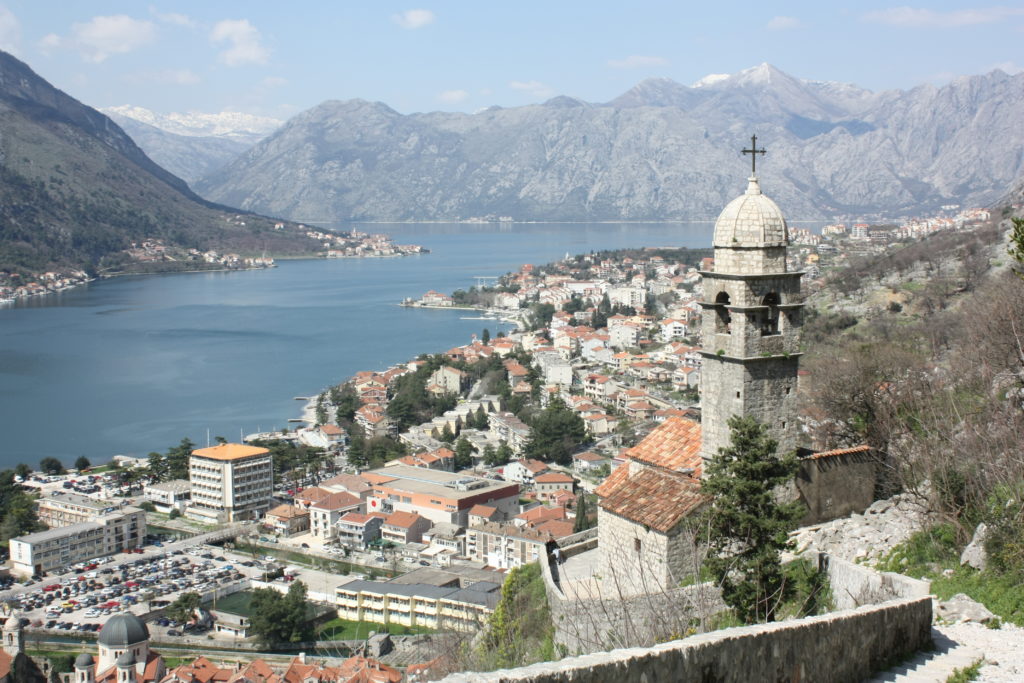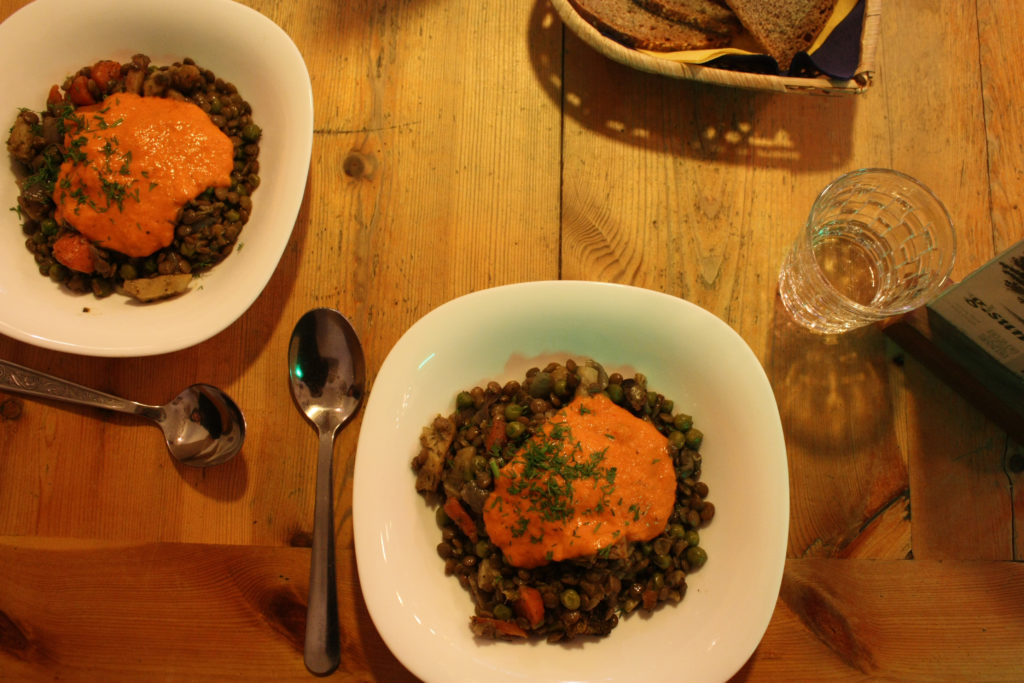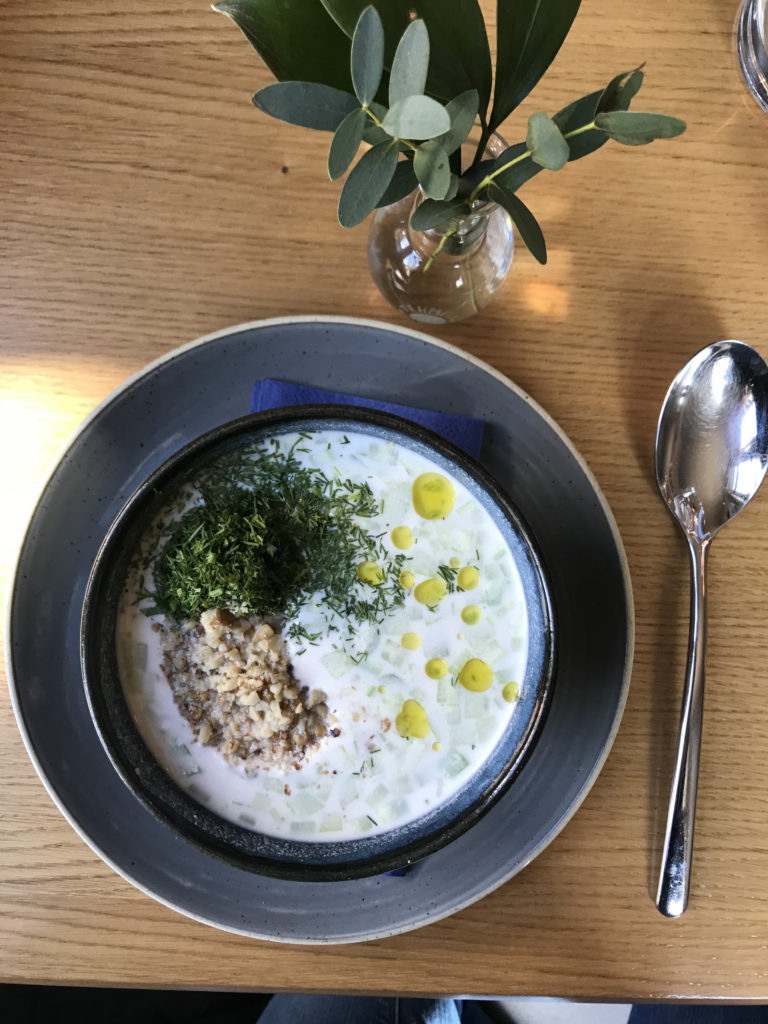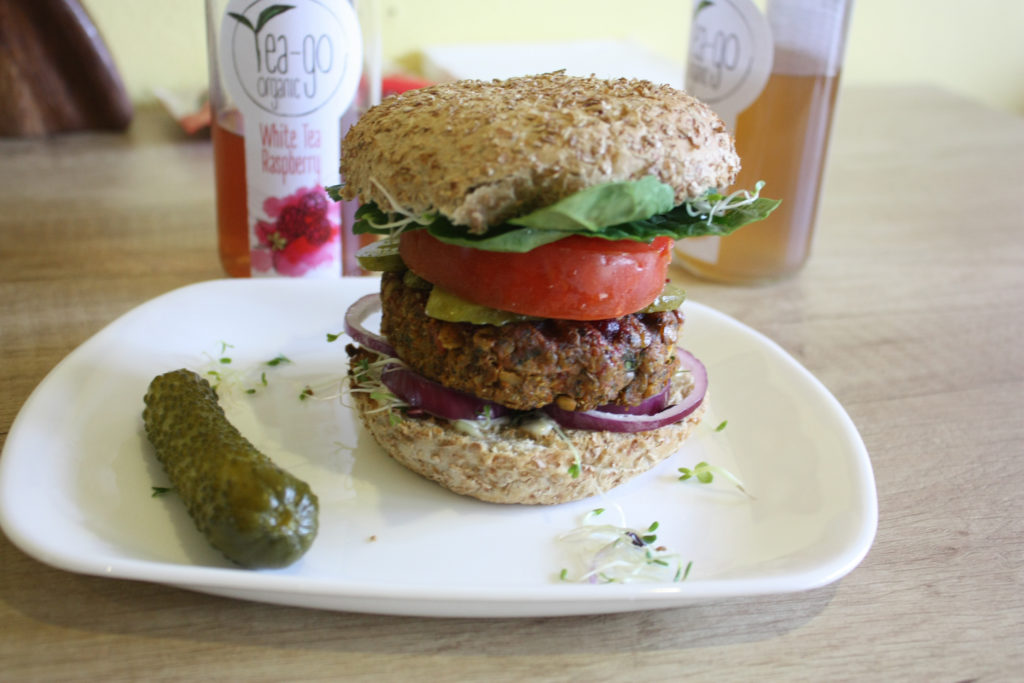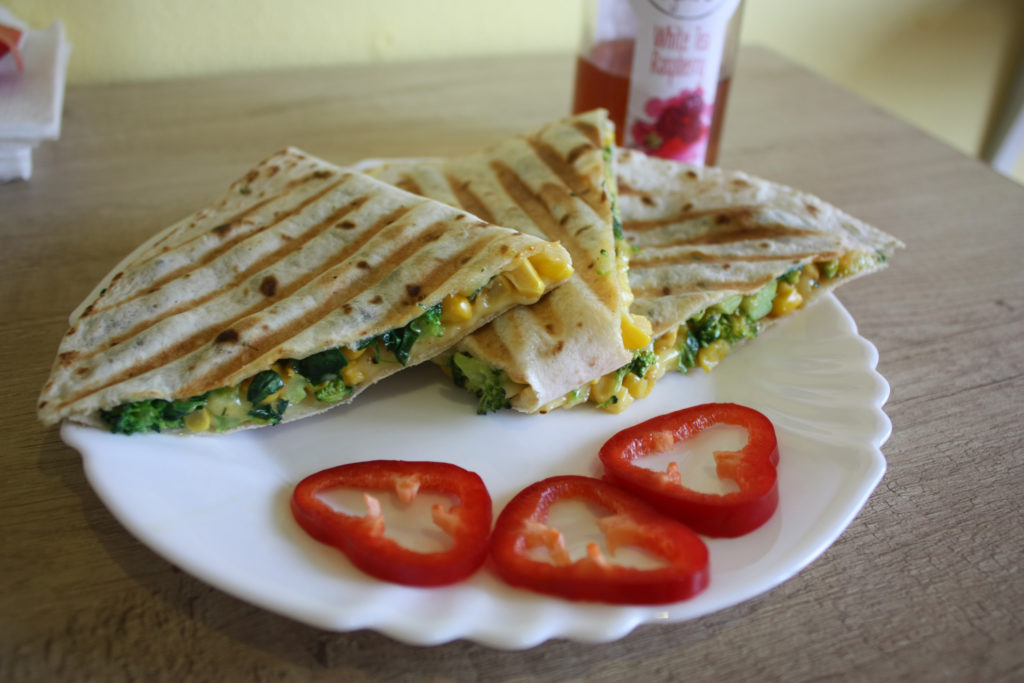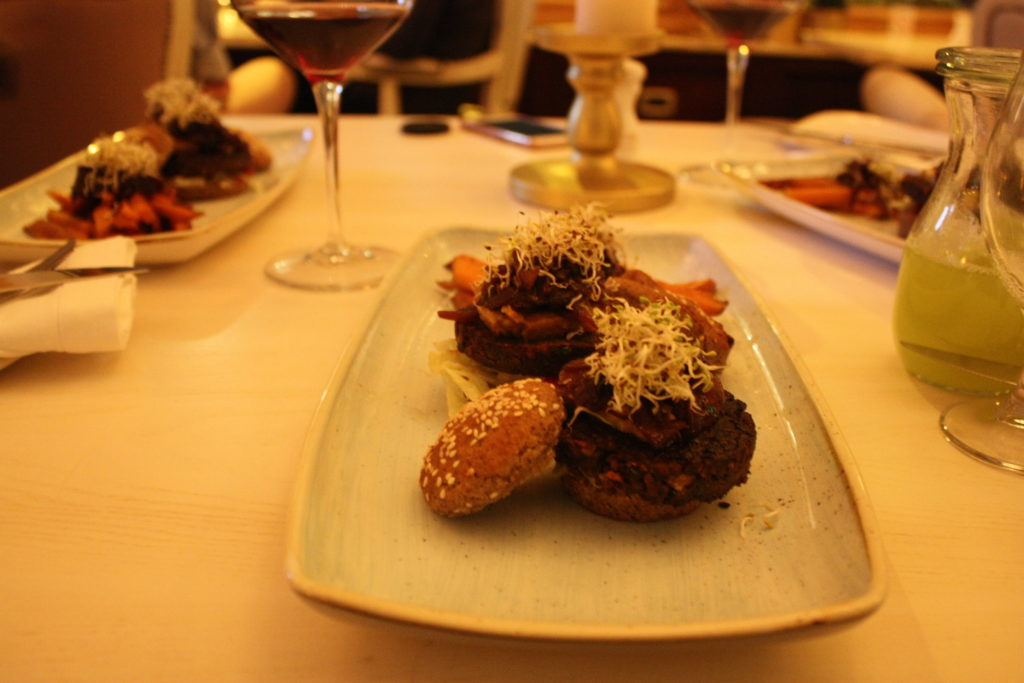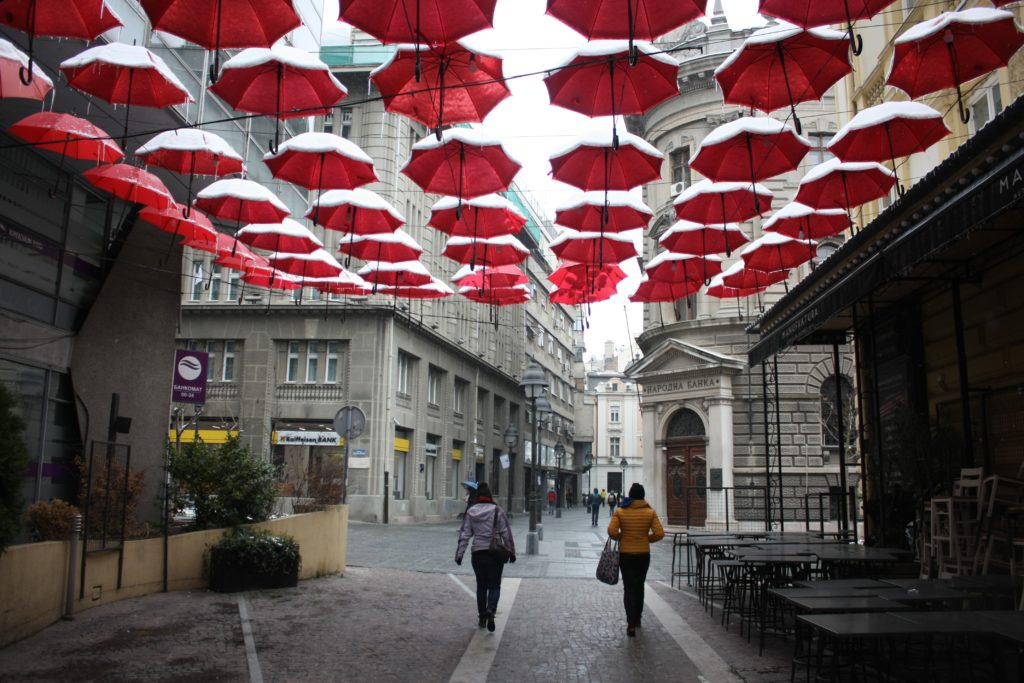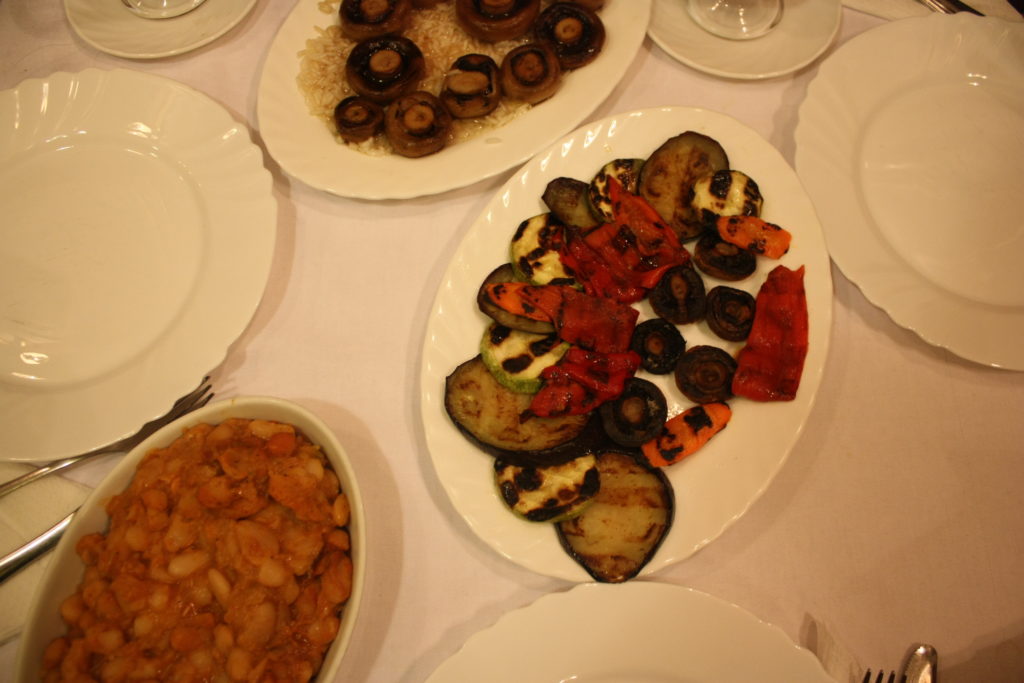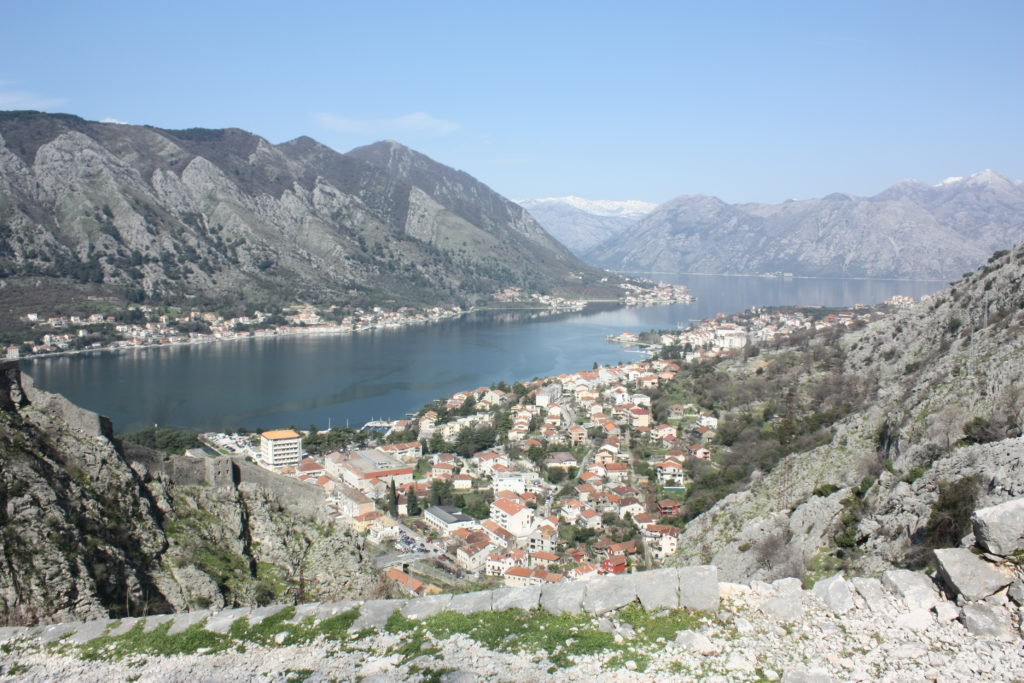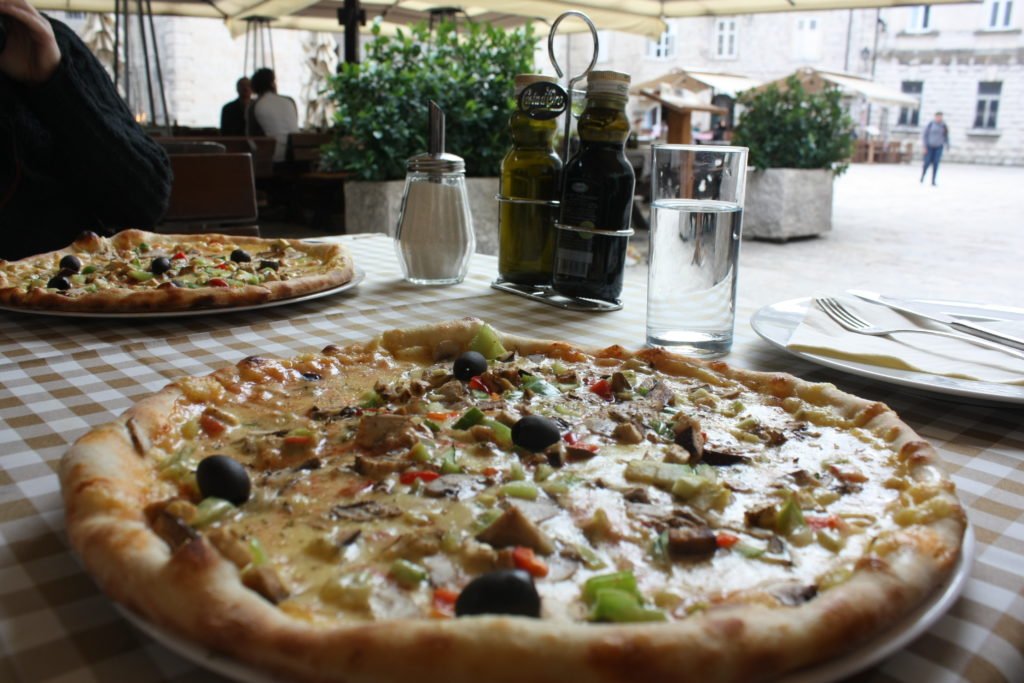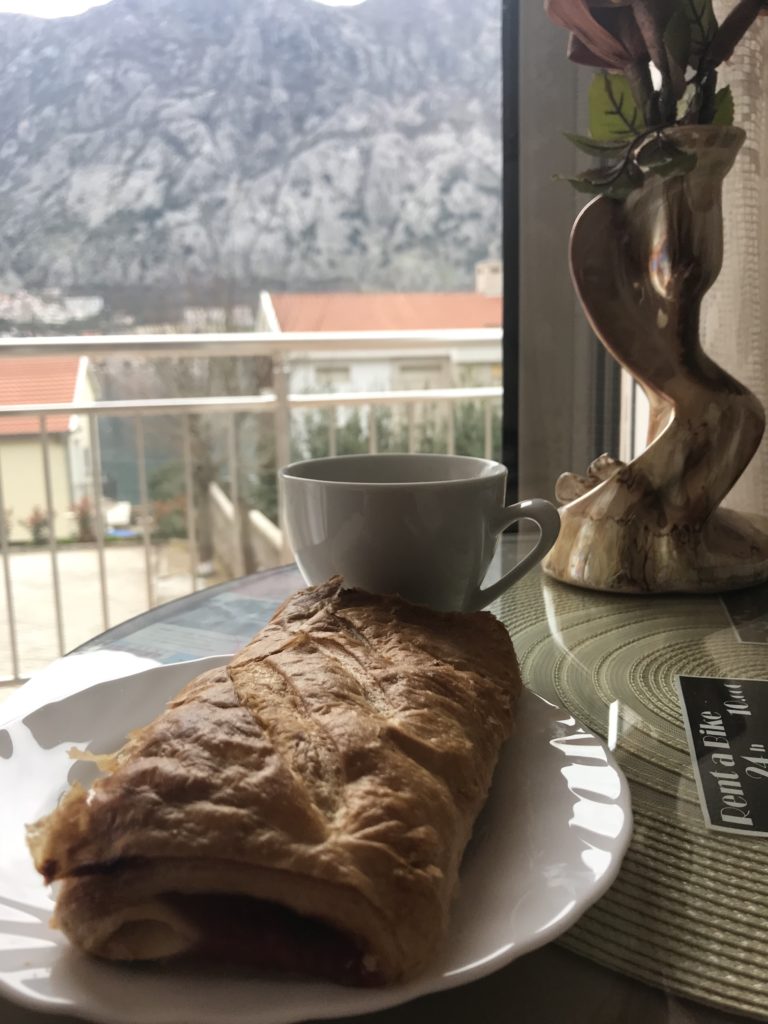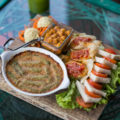Imagine a destination where you can go into any bakery and find vegan cherry strudel, chocolate-glazed croissants or spinach-filled flaky pastry. Welcome to Eastern Orthodox countries during Lent.
This scene, surprisingly, does not take place in NYC, Los Angeles, Berlin or London. In Serbia, Montenegro and Romania, you can find vegan food in bakeries, the grocery stores and some restaurants, thanks to the Eastern Orthodox religion.
At other times of the year, the cuisine in many of these countries is not very vegetarian or vegan-friendly, at first glance. In nearby Georgia (the country in the Caucasus, not the US state), a vegan café was attacked by sausage-wearing, far-right nationalists, who threw meat on customers’ plates. Glancing at restaurant menus in Serbia, you might see grilled meat dish after grilled meat dish after grilled meat dish.
However, say the magic word (“posno” in Serbian, “de post” in Romanian, “nistisimo” in Greek) and you’ll be presented with vegan food, thanks to Eastern Orthodox fasting. In the Eastern Orthodox religion, practitioners are asked to “fast,” or give up animal products like meat, dairy and eggs (honey and sometimes shellfish are permitted in some churches). The longest and most important fasting period is during Lent, but there are other times throughout the year when Eastern Orthodox followers fast, including Wednesdays and Fridays.
What this means for vegans is that vegan food is widely available throughout the year, but especially during Lent, in most Eastern Orthodox-majority countries (hooray!). You just need to ask if the food item contains honey or fish.
After a Lenten season trip to Romania a few years ago, where I found special vegan Lent menus in most restaurants, I was eager to return to Eastern Europe during Lent to explore the plant-based offerings.. I was joined by Sam and Laura, who helped me consume as many vegan pastries as humanly possible. We visited Bulgaria, Serbia and Montenegro.
Sofia, Bulgaria
We were informed that while Bulgaria has a large Eastern Orthodox population, few people these days follow Lent fasting (although we’ve since heard conflicting reports on whether or not this is true). Luckily, we could see on HappyCow that there were plenty of vegetarian and vegan restaurants!
Sofia is surprisingly vegan-friendly; there were two vegetarian restaurants on the same block as our guesthouse! We had delicious potato-stuffed banitsa (vegan version of traditional Bulgarian pastry) at Sun Moon and tea-smoked cauliflower at the adorable, cozy Veda Teahouse.
At Soul Kitchen, we ate my favorite meal of the whole trip: a creamy, cheesy porcini and truffle tagliatelle made with vegan cream and Violife vegan cheese.
Our last day, we discovered a new vegan restaurant, Edgy Veggy, which had opened only a couple of weeks before. Here we had a very reasonably priced and filling lunch just before we caught the bus to Serbia.
Nis, Serbia and Belgrade, Serbia
After Sofia, we headed to Serbia. Since it was Lent, we found vegan pastries in every bakery. Vegan items are usually marked with a sticker; sometimes it says “posno” and other times it’s a yellow sticker. It’s best to always ask for “posno” options!
For lunch, we’d stock up on potato, mushroom or spinach-stuffed pastries. For dessert we’d choose from a huge variety of sweet pastries which seemed to vary in every bakery we entered. In some bakeries we’d find cinnamon rolls and chocolate-glazed croissants; in others we feasted on a delicately-layered chocolate sponge cake and apple strudel.
In Nis, we found vegan options in a traditional kafana (Serbian café), Galija, where we ate prebanc (Serbian baked beans) and ajvar (a traditional roasted red pepper dip. At Pleasure Café we had soymilk for our lattes (oh joy of joys!). Although the dish came highly recommended by many locals, we had to pass on the roasted vegetable platter as we were just too full!
From Nis, we headed to Belgrade, where we dined on vegan burgers with cashew cheese at Glow.
The delicious burgers, despite their diminutive size, were deceptively filling.. At Shawarma Hanan, we ordered crispy, fresh out of the fryer falafel, topped with hummus, tomatoes, chillies and (with a nod to local flavors), shredded cabbage.
On Skadarlija street, the bohemian quarter in Belgrade (popular with tourists and full of cute kafanas, or traditional cafes), we settled into a café whose owner told us they had plenty of “posno” options. We ordered a veritable feast; between the three of us we shared prebanc (baked beans), roasted vegetables, grilled mushrooms, ajvar (roasted pepper dip) and French fries
Kotor, Montenegro
From Belgrade, we took the 10-hour train journey to Montenegro. Many have described this trip as one of the most beautiful train journeys in Europe and the mountain views were breathtaking. Unfortunately, the train was delayed and night fell as we entered the most picturesque stretch of the journey (which is in Montenegro).
I stayed in Kotor, an incredibly well-preserved medieval fortress town set against the stunning backdrop of Kotor Bay and the surrounding mountains.
Kotor is home to zero vegetarian restaurants, but I discovered that, due to an increased demand from tourist populations, several restaurants now serve pizza with vegan cheese. Dekaderon’s vegetarian pizza (request vegan cheese) was so good and so cheesy I had to ask twice to be certain they’d definitely used vegan cheese. They had.
At Hotel Conte just up the coast in Perast, I feasted on grilled vegetables and bread with balsamic vinegar. The delicious food was upstaged only by that atmosphere as my table was positioned just inches away from the water’s edge and overlooking the beautiful bay.
Of course, I ate my share of “posno” pastries in Montenegro, since just like in Serbia, they have vegan Lenten pastries available. Given that Kotor is famed for its cherry strudel, I had a “posno” cherry strudel almost every day during my five-day stay.
Conclusion
If you’ve never travelled to Eastern Europe, then there’s no better time to visit than during Lent. I’ve written this guide to vegan Lent to help you plan such a trip. In the guide, I cover many topics including where and when vegan Lent is celebrated and how to ask to ask for vegan food.
About the Author
Caitlin Galer-Unti is an author and the vegan food and travel writer behind The Vegan Word. She has published two books, The Essential Vegan Travel Guide and the Barcelona Vegan Guide. Caitlin has lived in the US, UK and Spain and has travelled to more than 30 countries (and counting!). All text and photos by Caitlin GAler-Unti.

